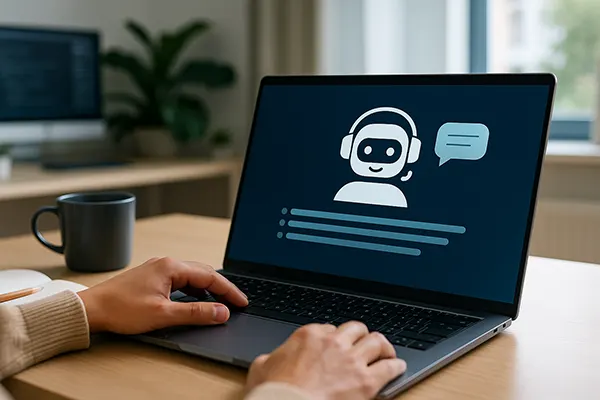
AI Assistants for Business: How to Build and Sell Personalised GPT Bots for Specific Niches
AI assistants have become more than just trendy tools—they’re now practical solutions for business automation, communication, and productivity. With the rise of customisable large language models like GPT, entrepreneurs can develop niche bots tailored to specific industries and client needs. This article explores how to create and successfully monetise these bots, focusing on actual practices and opportunities as of February 2025.
Understanding the Value of Personalised AI Bots
Creating AI bots for defined business needs is no longer reserved for tech giants. With the proliferation of no-code tools and open-source frameworks, it’s now feasible for individuals and small teams to develop and launch domain-specific bots. These assistants can handle customer service, lead qualification, internal knowledge support, training, and even creative tasks such as copywriting or content moderation.
Business owners increasingly seek specialised bots that understand their context. For example, a real estate agency benefits from a bot trained on industry-specific vocabulary and local legal terminology. In contrast, an e-commerce store needs an assistant that can track orders, suggest upsells, or help resolve common issues—all with conversational fluency.
What distinguishes a good niche bot is not just its language capabilities, but its alignment with actual workflows. That’s why personalised training data, intent mapping, and API integrations are essential steps to ensure your assistant provides measurable value rather than generic replies.
Who Needs Custom AI Assistants Today?
The demand for personalised GPT bots spans across industries. Healthcare providers want virtual receptionists that follow privacy regulations. Law firms need tools that summarise complex legal briefs. Educators look for content tutors adapted to curriculum standards. Even coaches and consultants are turning to AI to streamline onboarding and client Q&A.
In B2B, niche bots can act as pre-sales consultants, reducing time spent on repetitive queries. In B2C, they offer instant support and engagement, increasing customer satisfaction. What’s critical here is domain relevance. A bot made for a yoga instructor won’t serve an automotive parts supplier well—specialisation sells.
This is where GPT bots shine. With embeddings, contextual memory, and tools like RAG (retrieval-augmented generation), they can operate with high accuracy within narrow topics. As of early 2025, businesses are increasingly willing to pay for bots that save time, improve service, and reduce support overhead.
Steps to Building Your Own GPT Bot for a Niche
Starting with a clear business objective is key. Decide what problem your bot will solve and for whom. Will it respond to FAQs? Guide new users? Generate reports? Once you know its function, choose a base model such as GPT-4 or open-source alternatives like LLaMA or Mistral. Then, begin collecting industry-relevant prompts, documents, and vocabulary.
Using fine-tuning or retrieval-based strategies, you can personalise your assistant without building a new model from scratch. Tools like LangChain, AutoGen, or Flowise make it easier to create logic flows and integrate APIs. Connect your bot to communication channels your audience uses—Slack, WhatsApp, websites, or CRMs.
Testing is a non-negotiable part of development. Simulate real user interactions and iterate on failure points. Monitor for hallucinations, off-topic answers, and prompt leakage. Only when the assistant consistently delivers valuable responses should you consider it ready for client use.
Legal, Ethical, and Technical Considerations
Be transparent about AI use. Clearly indicate when users are interacting with a bot, not a human. This is not just ethical, but often legally required, especially in jurisdictions like the EU under GDPR or California under CCPA.
On the technical side, ensure your bot doesn’t store sensitive data unless explicitly permitted. Implement fallback scenarios and escalation paths for unresolved queries. For commercial applications, uptime and latency also matter—choose reliable hosting or managed LLM infrastructure to avoid downtime.
Licensing is another area to watch. If you’re using an open-source model, check for commercial usage rights. If you’re deploying GPT-4, understand the limits of your API usage and pricing tiers. Building a viable business starts with a responsible foundation.

How to Market and Monetise Your AI Assistant
Once your assistant is functional and reliable, define your monetisation strategy. Will you charge a flat fee, monthly subscription, or offer usage-based pricing? Many developers bundle their bots into SaaS offerings targeting niche groups—real estate agents, clinic operators, HR departments, etc.
Build a landing page showcasing what the bot does, who it helps, and how it integrates into workflows. Include testimonials and demo videos if possible. Attend industry webinars and forums to offer live demos. Success stories often spread through word-of-mouth in niche communities where trust matters more than fancy marketing.
Partnerships are another route. Collaborate with consultants or agencies who already work with your target audience. Offer them white-label versions or revenue share deals. As of 2025, this affiliate-style approach is proving effective for scaling GPT assistant deployments in specialised markets.
Scaling Beyond One Assistant
Once you master one niche, expand into others. Build a library of templates based on your previous success. Automate onboarding with standardised documentation and chat flows. Consider launching a dashboard for users to manage, train, and update their bots without your direct involvement.
This is how AI agencies and solopreneurs alike are scaling—by productising services into repeatable solutions. But remember: ongoing support and fine-tuning remain essential. As industries evolve, so do the queries people ask. Keep learning from real user interactions to stay ahead.
Finally, track your outcomes. Use metrics like response quality, task completion rates, and user satisfaction scores to refine your bots. Real-world impact—not just innovation—is what separates a novelty project from a sustainable AI business.




